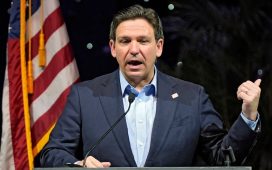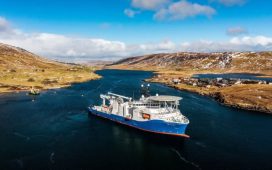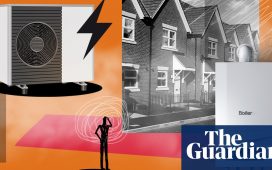From a remote field in Lincolnshire, teams of engineers are installing a high-voltage cable to carry electricity 765km to and from Denmark.
The world’s longest “interconnector”, the Viking Link will pass under the North Sea and four nations’ waters, dodging unexploded bombs and pagan burial sites along the way. It will eventually have the capacity to supply energy to 1.4mn homes in the UK, or 2mn in Denmark where average consumption is lower.
Interconnectors are crucial to Britain’s energy transition, in which the share produced from renewable sources has risen to 40 per cent from almost zero in 2010. But they also highlight the country’s continued dependence on overseas power supplies.
The Viking Link, a joint venture between FTSE 100 group National Grid and the Danish government’s transmission system operator, will be able to bring energy from Danish biomass plants on days when the UK wind turbines refuse to turn, providing a fallback to help resolve the intermittency of the UK’s main supply of renewable energy.
Britain already has eight electricity interconnectors — to Ireland, France, Belgium, the Netherlands and Norway — and capacity has risen to 8.4 gigawatts from 2.5GW in 2011. Energy regulator Ofgem wants this to more than double to 18GW by 2030 as electricity demand rises to power cars, buses and trains and gas boilers are replaced with heat pumps. National Grid owns five of the eight.
Ofgem in December gave “pilot project” status to interconnector projects to Belgium and the Netherlands, meaning they will undergo further assessments to decide whether they meet consumers’ needs.

But experts said there are drawbacks to the increase of the connections.
“It’s all part of creating a Europe-wide grid that is a back-up to renewables intermittency,” said Michael Bradshaw, global energy professor at Warwick Business School. “The downside is it’s exposed to energy security threats — it’s just like a gas pipeline except it’s electrons, not molecules.”
Observers said there are risks in remaining reliant on the goodwill of neighbours. Although the UK has since April exported more energy than it has imported, there is a question as to whether there will be sufficient supplies if the situation reverses and cold snaps drain European storage.
National Grid was forced to ask the Netherlands this week for an emergency increase in imports via the subsea cables to avoid blackouts in the south-east of England.
Dieter Helm, economic policy professor at Oxford university, said there was a “huge vulnerability in the UK relying on external energy supplies in the face of shocks”.
“We are doing it with gas, where there is almost no storage and no back-up, which requires us to pay the highest price for LNG tanker loads, which is one reason the gas crisis hit the UK so hard,” he added.
“With electricity it is good to trade but if the great Brexit game is taking back control, the right answer is to make sure we have enough domestic generation capacity, especially with so much intermittency from wind.”
Brexit has also made it less clear what would happen if the EU decided to stop energy exports to non-EU countries to conserve their own supplies. Before Brexit the interconnector flows between Britain and continental Europe were determined by an algorithm to ensure electricity flowed according to price differentials. Now it is conducted manually, adding to the complexity.

“Instead of being part of the development, co-ordination and rules of a pan-EU grid, we are playing a unilateral game,” said Helm. “The UK post-Brexit wants its cake and to eat it — it wants to benefit from the links to France and to north European countries, whilst not having to follow the internal energy market rules and regulations.”
The interconnectors could also be used as political bargaining chips, said Bradshaw. “It may sound a trivial point but it is not that long ago the French government threatened to switch the power off to Guernsey because it had a squabble over fishing rights.”
The department for business, energy and industry insisted the “concerns are unfounded”, saying “the trade of energy with our European partners over interconnectors is subject to robust regulatory and commercial arrangements, underpinned by international treaties with the EU and Norway”.
National Grid said there was “strong political support” for cross-border co-operation.
“We don’t see this as a risk,” said Cordi O’Hara, president of National Grid Ventures. “There is a clear recognition that our interconnectors to Europe are mutually beneficial.”
But any dependency could drive up costs. In the UK, unlike most other European nations, interconnectors are owned by the private sector, most of which are protected from risk through a cap and floor system, where the government “tops up” revenue to a minimum level and collects excesses over a defined amount.
Bradshaw has concerns over private sector ownership. “One of the lessons of the energy crisis is that if everything is in private hands, it’s harder for government to influence control,” he said.
“Who owns what is important . . . things in private ownership have to deliver a return on investment and a return to shareholders and the owners might shut things down if it’s more profitable to do so.”
But National Grid said that private investment has driven “a doubling of interconnector capacity in the past four years, with the cap and floor mechanism preventing companies from taking excessive profits.”
“Interconnectors,” it said, “are just one important part of the UK’s broader energy mix.”











